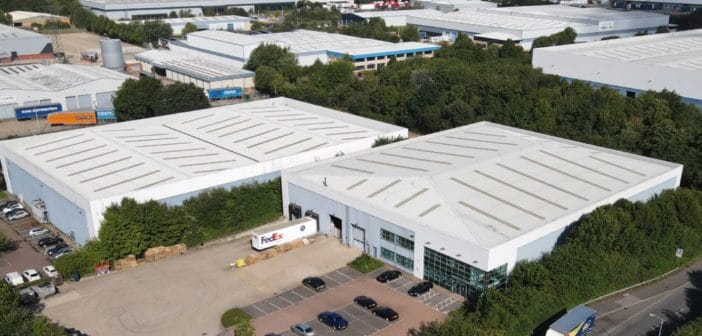You are here : Home » Insights »
A rapid transformation on the rooftops of many industrial REITs is underway as landlords ramp up their commitment to solar initiatives.
This is being driven by a mix of company, investor and tenant demand to reduce carbon emissions.
It’s logistics warehouses that are at the forefront of incorporating rooftop solar panels as a source of renewable energy, not surprising given the large surface areas of warehouse rooftops.
Additionally, strong property market fundamentals have afforded logistics landlords an attractive cost of capital which has helped fund increased investment in solar.

In a recent survey of industrial REITs conducted by Resolution Capital, we found most prefer to own, and therefore control, solar panels rather than outsource to a third party.
A typical warehouse can accommodate around one megawatt (MW) of capacity and covers approximately 50-60% of the rooftop area.
Installation costs are circa A$1 million per MW.
The useful life of the panels is around 20-30 years, and as such is more suited to younger buildings as it would be uneconomic to have to replace roof sheets on an older building before the solar panels reach the end of their useful life.
Moreover, older roofs may not be able to bear the weight of the panels. As such, landlords with younger portfolios and/or a development capability are better able to deploy solar panels.
The revenue models range from selling energy directly to tenants within the building, selling to the grid, or receiving government subsidies (Green Certificates).
When it comes to government subsidies for solar, they are typically fixed amounts for a period of time (ranging from 10 to 20 years) depending on the country and year the scheme was established.
Geographically, Japan appears to have the most attractive government subsidies, followed by Northern Europe.
More recent subsidy schemes are less generous than earlier iterations as the cost of solar panels has reduced significantly.
It is not always clear what proportion of a building’s total energy consumption will be generated from solar panels as landlords often don’t have visibility into the tenant power usage data.
However, this is improving over time as landlords install energy monitoring tools.
For many logistics tenants, rooftop solar panels can generate enough power to cover their entire needs, but more intensive energy users such as multi-storey logistics warehouses, cold storage or highly automated ecommerce facilities still need to rely on the grid for much of their power.
In some locations, tenants can save up to 30% on their energy bills buying solar power from their landlords – but it is not just about the cost savings and environmental benefits.
Some tenants also view rooftop solar as a part of their energy security plan.
A Belgian listed REIT in Resolution Capital’s portfolio, Warehouses de Pauw (WDP), currently has 85MW of installed capacity across a third of its buildings.
Solar revenue contributes approximately 7% of total portfolio income – thus the company boasts that its ‘largest tenant is the sun’.
NYSE-Listed Prologis (PLD) has over 200MW of capacity across its portfolio, a 46% increase over the past five years, and plans to double that to 400MW over the next 5 years.
In Australia, Goodman Group (GMG) is even more ambitious, recently announcing it would quadruple its 2025 target from 100MW to 400MW of installed capacity – a tenfold increase from its current installed base.
For context, 400MW could power approximately 120,000 homes for a year.
The REIT landlords we surveyed indicated that the return on investment over the useful life of the panels is typically in line with the internal rate of return on the real estate.
Battery storage is not yet widespread as the economics currently don’t pencil.
However, as battery costs are expected to continue to fall rapidly it is hoped that battery storage becomes more feasible within the next 3-5 years.
We are encouraged by the increased commitment to solar panels by many industrial REIT landlords and will continue to engage with investee companies to promote the use of renewable energy sources – something we believe will ultimately be positive for long term investment returns from industrial REITs.
READ MORE: A-REITs still offer compelling opportunities for patient investors
